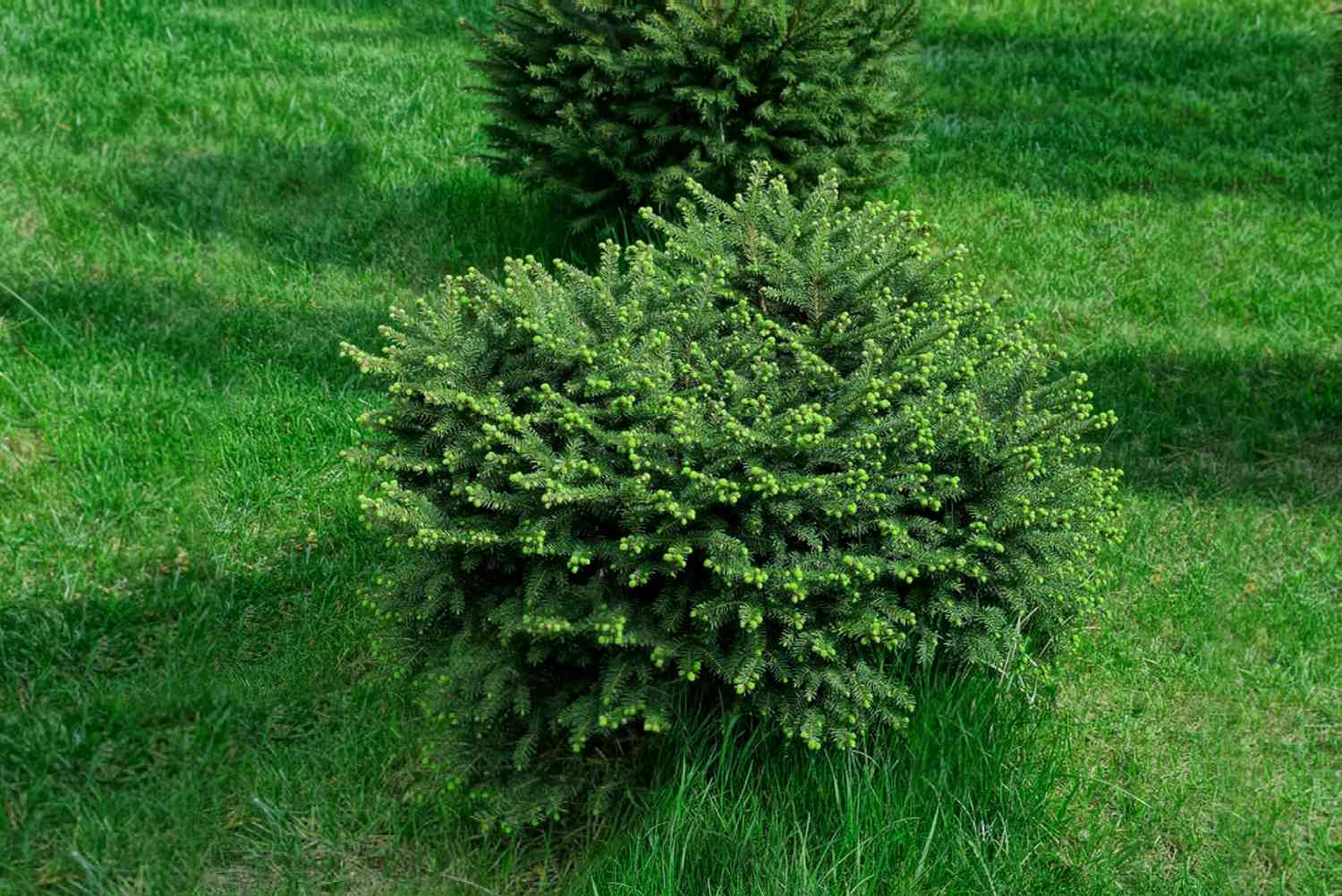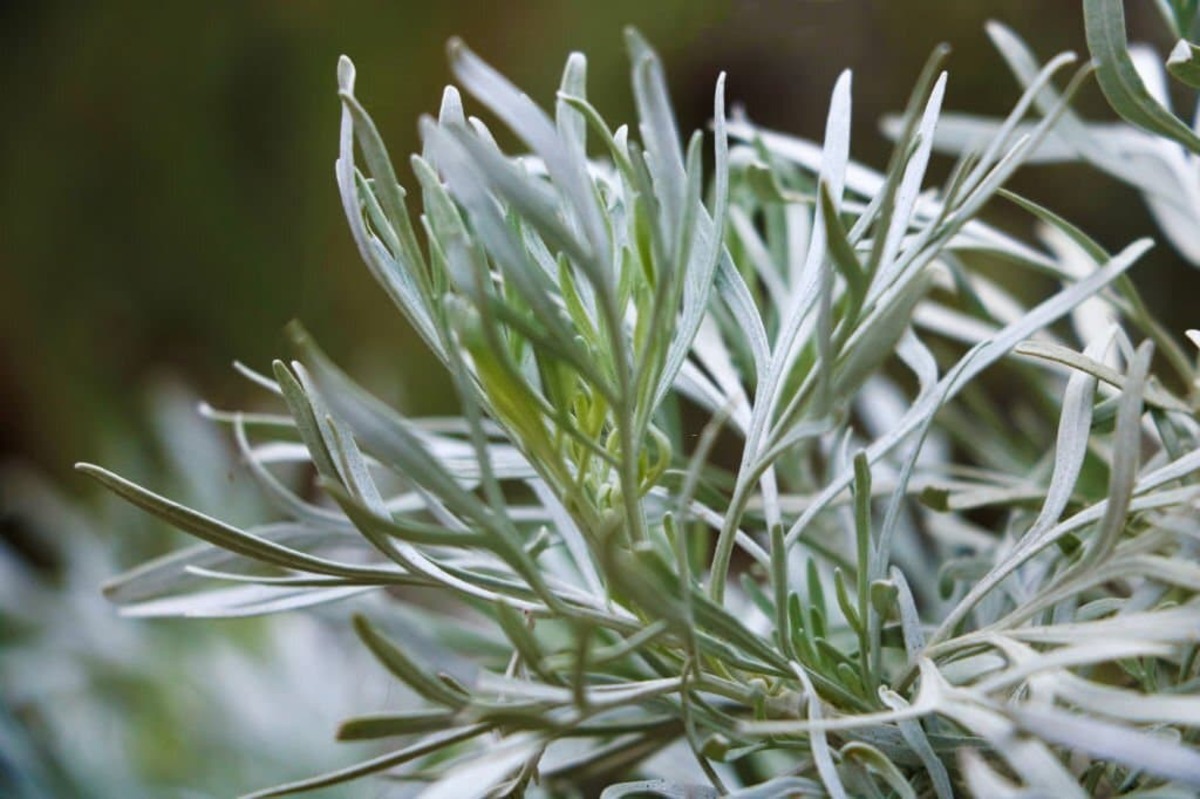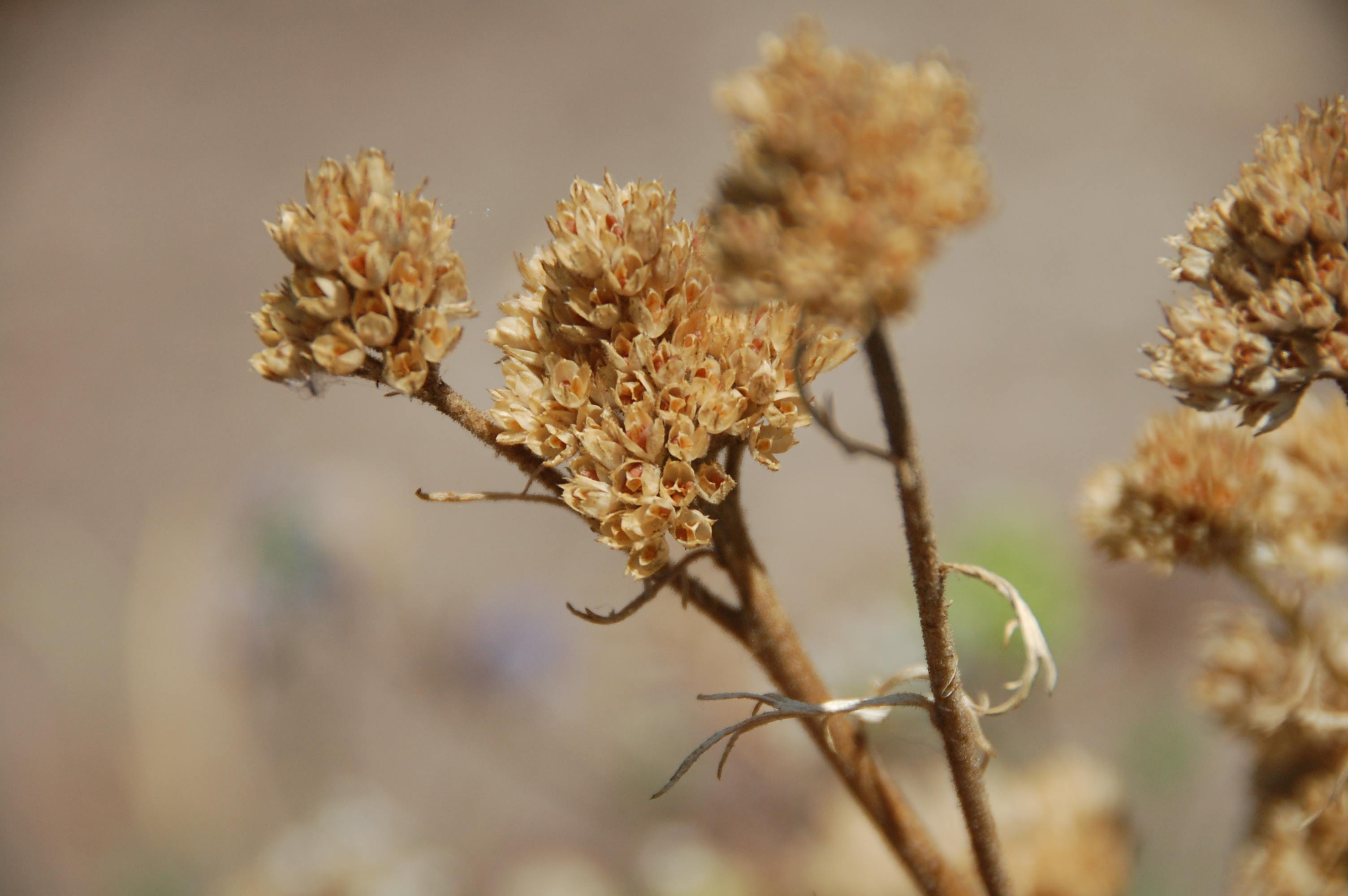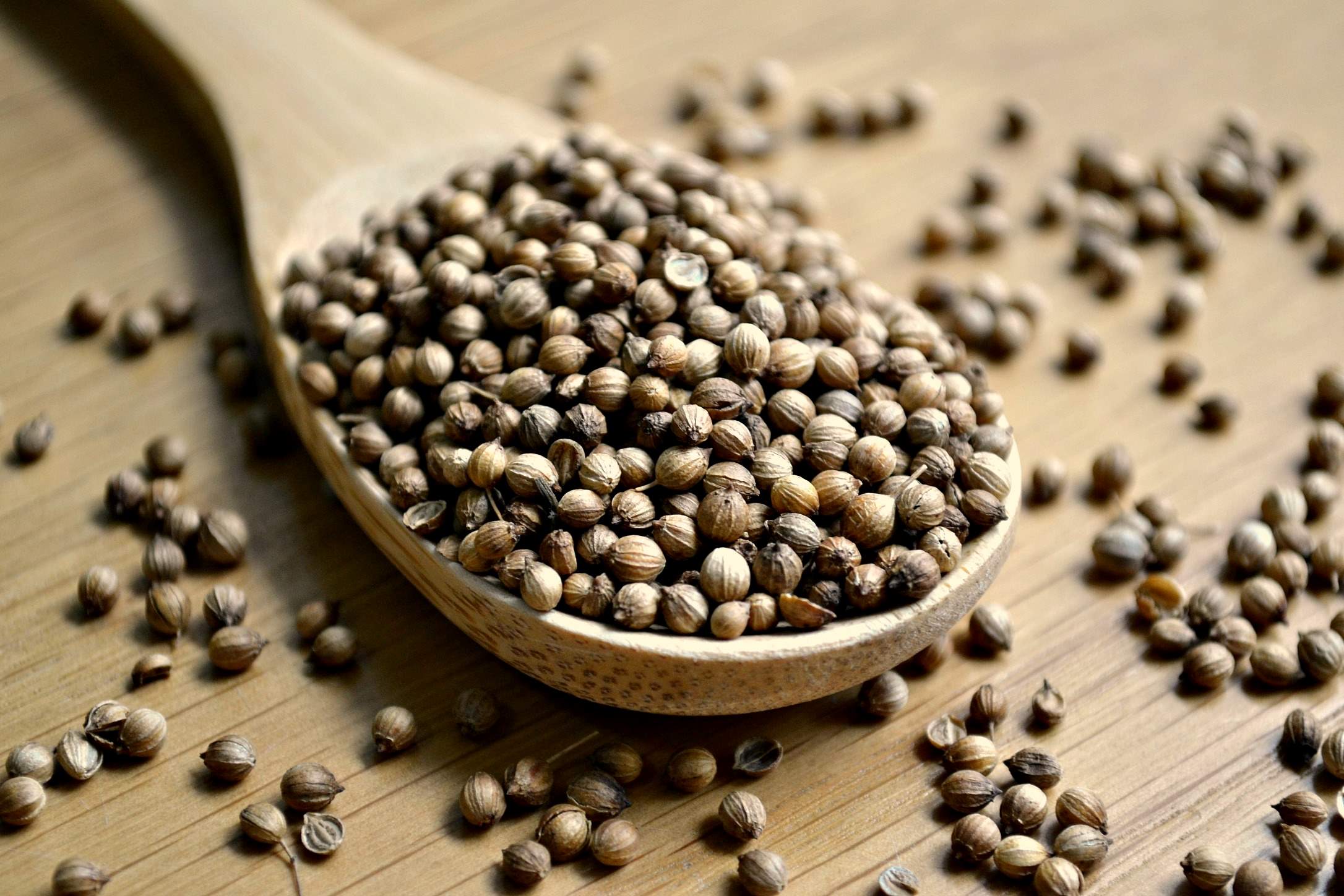Home>Gardening News and Trends>Latest News>What Other Insects Look Like Bed Bugs


Latest News
What Other Insects Look Like Bed Bugs
Published: November 28, 2023
Discover the latest news on what other insects may resemble bed bugs. Stay informed and learn how to distinguish between them for effective pest control.
(Many of the links in this article redirect to a specific reviewed product. Your purchase of these products through affiliate links helps to generate commission for Chicagolandgardening.com, at no extra cost. Learn more)
Table of Contents
Introduction
Bed bugs are a common nuisance that many people dread encountering in their homes. These small, reddish-brown insects feed on human blood and can cause itchy bites and sleepless nights. Identifying bed bugs is crucial for effective pest control, but it can sometimes be challenging, as there are other insects that resemble bed bugs.
In this article, we will explore the different insects that can be mistaken for bed bugs. By understanding the characteristics and behaviors of these look-alike insects, you can avoid unnecessary panic and take the appropriate steps to address any infestations.
It is important to note that while these insects may resemble bed bugs, they have different habits, feeding preferences, and potential risks. Therefore, proper identification is essential to ensure the most effective treatment and prevention methods are employed.
Before delving into the specific insects that resemble bed bugs, let’s briefly discuss how to identify bed bugs themselves. Bed bugs are small, oval-shaped insects with flat bodies, ranging in size from 4 to 5 millimeters in length. They are typically reddish-brown, but their color can vary depending on their age and whether or not they have recently fed.
Bed bugs are nocturnal creatures that hide during the day and come out at night to feed on human blood. They are attracted to the carbon dioxide we exhale and the warmth of our bodies. Bed bugs often infest areas where we spend extended periods of time, such as beds, couches, and chairs, hence the name “bed bugs.”
Signs of a bed bug infestation include reddish or rust-colored stains on sheets and mattresses, dark spots or specks (bed bug excrement) on furniture or walls, and a sweet, musty odor in the infested area. If you suspect a bed bug infestation, it is essential to take immediate action to prevent the problem from worsening and spreading to other areas of your home.
Now that we have covered the basics of identifying bed bugs, let’s explore the insects that often get mistaken for these pesky creatures.
Identifying Bed Bugs
Properly identifying bed bugs is the first step towards effectively dealing with an infestation. While bed bugs are small and often hide during the day, there are several key characteristics that can help distinguish them from other insects.
Bed bugs have a distinct appearance with certain features that set them apart. They are small, oval-shaped insects with flat bodies, ranging in size from 4 to 5 millimeters in length. Their color can vary from reddish-brown to light brown, depending on their age and whether or not they have recently fed. One key characteristic is their segmented antennae, which have four parts.
Another identifying feature of bed bugs is their behavior. They are nocturnal creatures and are most active during the night. Bed bugs are attracted to the carbon dioxide we exhale and the warmth of our bodies, which is why they often infest areas where we spend extended periods of time, such as beds, couches, and chairs.
Signs of a bed bug infestation include bites on the skin. Bed bug bites often appear in a row or cluster, and they can be itchy and inflamed. However, it’s important to note that not everyone reacts to bed bug bites, and some people may not have any visible signs of being bitten by bed bugs.
In addition to bites, other indicators of a bed bug infestation include reddish or rust-colored stains on sheets and mattresses. These stains are caused by bed bugs being crushed or by their excrement. Another sign to look for is dark spots or specks, which are bed bug excrement, on furniture or walls. Additionally, a sweet, musty odor may be present in areas where bed bugs are infesting.
If you discover any of these signs or suspect a bed bug infestation, it is important to take immediate action. Contact a professional pest control service to properly identify and address the infestation. DIY methods may not be effective in eradicating the problem fully, as bed bugs are resilient and can quickly reproduce.
Remember, proper identification of bed bugs is crucial to ensure the most appropriate treatment methods are used. By being aware of their distinct characteristics and behaviors, you can differentiate bed bugs from other insects that may resemble them.
Other Insects that Resemble Bed Bugs
While bed bugs have their distinct characteristics, there are several other insects that can resemble them to some extent. It’s important to be aware of these look-alike insects to avoid unnecessary panic and confusion. Here are some common insects that are often mistaken for bed bugs:
- Bat Bugs: Bat bugs closely resemble bed bugs in appearance and behavior. They are commonly found in bat-infested areas but can also be found in human dwellings. Bat bugs are blood-feeding insects that feed on bats, but they can bite humans if bats are not available.
- Spider Beetles: Spider beetles are small insects that have a similar shape and size to bed bugs. They have a round, bulbous body and long legs, giving them a spider-like appearance. Spider beetles are scavengers and can be found in stored food products or in areas with animal or bird nests.
- Booklice: Despite their name, booklice are not lice and do not feed on blood. They are tiny insects that resemble bed bugs, but they are harmless. Booklice feed on fungi and mold found in humid environments. They are often found in old books, hence the name.
- Cockroach Nymphs: Cockroach nymphs can sometimes be mistaken for bed bugs due to their similar size and color. These young cockroaches are smaller than adult cockroaches and have a lighter, reddish-brown color. However, cockroach nymphs have a more elongated body shape, different antennae, and distinct crawling habits.
- Carpet Beetles: Carpet beetles are small, oval-shaped insects with varied color patterns. Their coloring can range from dark brown to black, with lighter-colored scales on their backs. While carpet beetles do not feed on blood like bed bugs, their larvae can cause damage to carpets, clothing, and other household items.
- Fleas: Fleas are parasitic insects that often infest pets and can bite humans as well. They are small, wingless insects with a laterally flattened body. Fleas have a reddish-brown color and possess strong legs for jumping. Flea bites can cause itching and discomfort, similar to bed bug bites.
- Swallow Bugs: Swallow bugs are closely related to bed bugs and are often found in areas where bird nests are located, such as chimneys or roofs. They are blood-feeding insects that primarily feed on birds but can bite humans if their preferred hosts are not available. Swallow bugs resemble bed bugs but have longer hairs on their bodies.
It is essential to note that while these insects may resemble bed bugs to some degree, their habits, feeding preferences, and potential risks differ. Proper identification is crucial to ensure appropriate treatment and prevention methods are employed.
If you suspect an infestation involving any of these insects, it is advisable to consult a pest control professional for accurate identification and effective pest management strategies. They will be able to differentiate between these look-alike insects and bed bugs and provide the best course of action to address the situation.
Bat Bugs
Bat bugs are insects that closely resemble bed bugs in both appearance and behavior. They are often mistaken for bed bugs and can cause confusion among homeowners. While they are closely related to bed bugs, there are some differences between the two.
One key distinction is their preferred hosts. While bed bugs primarily feed on human blood, bat bugs prefer to feed on bats. However, if bats are not available, bat bugs can bite humans, leading to similar itchy bites as bed bugs. Therefore, the presence of bat bugs can indicate a nearby bat infestation.
In terms of appearance, bat bugs look very similar to bed bugs. They have a similar size, ranging from 4 to 5 millimeters in length, and a flat, oval-shaped body. They are reddish-brown in color, but their color can vary depending on their age and whether or not they have recently fed.
Like bed bugs, bat bugs are nocturnal insects that hide in cracks and crevices during the day and come out at night to feed. They are attracted to the warmth and carbon dioxide emitted by their hosts, whether it be bats or humans. This is why they are commonly found in areas where bats roost, such as attics, wall voids, and chimneys.
If you suspect a bat bug infestation, it is crucial to address the underlying issue of the bat presence. Removing bats from your property should be done with the assistance of professionals, as they are protected animals in many areas. Once the bats have been evicted, treating the infested areas for bat bugs should be carried out by a pest control specialist.
Effective treatment for bat bugs involves targeted insecticide applications to cracks and crevices where the bugs hide. Thorough vacuuming and steam cleaning can also be effective in eliminating bat bugs and their eggs. It is important to follow the recommendations of a professional to ensure the treatment is successful.
Remember, if you come across insects that resemble bed bugs but suspect they may be bat bugs due to the presence of bats, it is crucial to seek professional assistance. They will be able to properly identify the insects and guide you in the most appropriate course of action to deal with the infestation and prevent further issues.
Spider Beetles
Spider beetles are small insects that often get mistaken for bed bugs due to their similar size and shape. These beetles belong to the family Ptinidae and are commonly found in homes and warehouses where food products or organic matter are stored.
One notable feature of spider beetles is their round, bulbous body shape, which can resemble the body shape of bed bugs. They are typically small in size, ranging from 1 to 4 millimeters in length. Spider beetles have long, slender legs, which contribute to their spider-like appearance.
Unlike bed bugs, spider beetles are not blood-feeding insects and do not bite humans. They are scavengers that feed on a wide variety of food sources, including grains, cereal products, dried fruits, dead insects, and bird or rodent nests. Due to their scavenging nature, these beetles can be found in kitchen pantries, basements, and other areas where food is stored.
If you suspect you have spider beetles in your home, it is important to locate and eliminate the source of infestation. Inspect any stored food products, especially those that have been left unsealed or have expired. Properly disposing of infested items and maintaining good sanitation practices can help control spider beetle populations.
Preventing spider beetles from infesting your home involves storing food in airtight containers, regularly cleaning and vacuuming areas where food debris can accumulate, and sealing any cracks or openings that could serve as entry points.
If you are unsure whether the insects you have found are spider beetles or bed bugs, it is recommended to consult a pest control professional for accurate identification. They can assess the situation, identify the insects, and provide you with effective strategies to control the infestation.
Remember, although spider beetles can be a nuisance in terms of damaging stored food products, they are not a threat to human health. By implementing proper prevention measures and promptly addressing any infestations, you can keep your home spider beetle-free.
Booklice
Despite their name, booklice are not lice at all. These tiny insects are commonly mistaken for bed bugs due to their similar size and appearance. However, there are several notable differences between the two.
Booklice, also known as psocids, belong to the order Psocoptera. They are very small, measuring only about 1 to 2 millimeters in length. Unlike bed bugs, booklice are not blood-feeding insects and do not bite humans. Instead, they feed on microscopic molds, fungi, and other organic matter found in humid environments.
Booklice are commonly found in areas with high humidity, such as basements, bathrooms, and kitchens. They are often discovered in old books, hence their name, as well as in stored grains, plants, and other organic materials.
Unlike bed bugs, booklice do not have a flattened body shape. They have a more elongated body and longer antennae. Booklice are usually pale in color, but they can range from yellowish-brown to grayish-white, depending on the species and environmental factors.
If you suspect booklice infestation, it is important to address the underlying issue of high humidity. Proper ventilation, dehumidifiers, and regular cleaning can help control booklice populations. Removing any affected items, such as damp books or stored organic materials, can also help eliminate their food source.
Preventing booklice infestations involves maintaining proper humidity levels in your home. Keeping the relative humidity below 50% can discourage the growth of molds and fungi, which are the primary food source for booklice. Regularly inspecting and cleaning areas prone to high humidity, such as bathrooms and basements, can also help prevent booklice infestations.
If you are uncertain whether the insects you have discovered are booklice or bed bugs, it is advisable to consult a pest control professional for accurate identification. They can assess the situation, identify the insects, and provide appropriate recommendations for effective pest control.
Remember, booklice are more of a nuisance than a threat and do not pose any health risks. By maintaining proper humidity levels and implementing preventive measures, you can keep your home free from booklice infestations.
Cockroach Nymphs
Cockroach nymphs are often mistaken for bed bugs due to their similar size and color. These young cockroaches share some physical characteristics with bed bugs, but there are key distinctions between the two.
Cockroach nymphs are the early stages of development for cockroaches. They are smaller in size than adult cockroaches and have a lighter, reddish-brown color. Like bed bugs, cockroach nymphs have a flattened body shape, but their body is more elongated compared to the oval shape of bed bugs.
One notable difference between cockroach nymphs and bed bugs is their antennae. Cockroach nymphs have long, filament-like antennae, while bed bugs have shorter, segmented antennae.
In terms of behavior, cockroach nymphs differ from bed bugs as well. Cockroaches are active insects that scuttle around searching for food and water, while bed bugs are more sedentary, hiding during the day and coming out at night to feed on blood.
If you discover insects that resemble bed bugs but suspect they may be cockroach nymphs, it is important to thoroughly inspect your home for any signs of cockroach infestation. Look for feces, shed skins, egg casings, or a strong musty odor, as these are all indications of a cockroach problem.
Controlling cockroach infestations is crucial for both preventing health risks and eliminating the possibility of mistaken identity with bed bugs. Maintaining good sanitation practices, sealing any cracks or openings, and removing food and water sources can help deter cockroach activity.
If your home is already infested with cockroaches, it is best to consult a professional pest control service. They can identify the specific species of cockroach, assess the level of infestation, and provide effective treatment options to eliminate the problem.
Remember, while the appearance of cockroach nymphs might resemble bed bugs, understanding their distinct characteristics and behaviors will help differentiate between the two, and enable you to take the appropriate actions for effective pest control.
Carpet Beetles
Carpet beetles are small, oval-shaped insects that can sometimes be mistaken for bed bugs due to their size and color. However, there are key differences between these insects that can help distinguish them from one another.
Carpet beetles belong to the family Dermestidae and are commonly found in homes where they feed on a variety of natural materials. They can infest carpets, clothing, upholstered furniture, and even stored food products.
One notable difference between carpet beetles and bed bugs is their diet. Carpet beetles are not blood-feeding insects like bed bugs. Instead, they feed on a wide range of organic materials, including fibers, feathers, fur, and dead insects. The larvae of carpet beetles can cause damage to carpets, clothing, and other household items.
In terms of appearance, adult carpet beetles are small, ranging from 2 to 5 millimeters in length. They have a varied color pattern, with dark brown or black bodies covered in light-colored scales. Bed bugs, on the other hand, have a reddish-brown color and a more uniform appearance.
Another distinguishing feature of carpet beetles is the presence of distinctive bristle-like hairs on their bodies. These hairs can be seen with the naked eye and help to differentiate them from bed bugs.
To prevent carpet beetle infestations, it is important to maintain good hygiene and cleanliness in your home. Vacuuming regularly, especially in areas where carpet beetles may accumulate, such as carpets, rugs, and upholstered furniture, can help remove any eggs or larvae.
If you suspect a carpet beetle infestation, thorough cleaning and removal of affected items, such as infested clothing or carpets, is essential. In severe cases, professional pest control may be necessary to eradicate the infestation completely.
Overall, while carpet beetles may resemble bed bugs in size and color, their feeding habits and physical characteristics set them apart. Understanding these differences will help you accurately identify the pest and take appropriate measures for effective pest control.
Fleas
Fleas are parasitic insects that can be mistaken for bed bugs due to their ability to bite humans and cause itchy skin irritations. These small, wingless insects belong to the order Siphonaptera and are typically associated with infestations in pets, such as dogs and cats.
While fleas and bed bugs are both capable of biting humans, there are distinguishing characteristics that set them apart. Fleas have a laterally compressed body, which allows them to move easily through the fur of animals. They have strong legs, designed for jumping long distances. In contrast, bed bugs have a flat, oval-shaped body and shorter legs.
One of the key differences between fleas and bed bugs is their preferred habitats. Fleas generally infest areas where pets spend time, such as bedding, carpets, and furniture. They lay eggs in these areas, and the larvae develop by feeding on organic debris and flea feces.
Another distinguishing factor is their feeding habits. Fleas are ectoparasites, meaning they feed off the blood of their hosts. They have specialized mouthparts that enable them to pierce the skin and suck blood. Bed bugs, on the other hand, also feed on blood but do so by piercing the skin with their mouthparts and remaining attached until they have finished feeding.
Flea bites can cause itching and discomfort, similar to bed bug bites. Flea bites often result in small, red, raised bumps that may be arranged in clusters or linear patterns. These bites can be found on exposed areas of the body, such as the ankles, legs, and arms.
To address a flea infestation, it is important to treat both pets and their environment. Consult a veterinarian for appropriate flea treatments for your pets, and thoroughly clean and vacuum your home, paying close attention to areas where your pets spend time. In severe infestations, professional pest control may be required.
It is crucial to note that the presence of fleas usually indicates a pet infestation, while bed bugs are often associated with human habitats. Proper identification of the insect is vital to implement effective treatment and prevent future infestations.
If you are unsure whether you are dealing with fleas or bed bugs, seeking professional advice can help determine the correct identification and guide you in developing an appropriate pest control plan.
Swallow Bugs
Swallow bugs are insects that closely resemble bed bugs and are often found in areas where birds, particularly swallows, nest. These bugs are part of the Cimicidae family, just like bed bugs, and are known for their ability to bite humans if their preferred hosts are not available.
Swallow bugs have a similar appearance to bed bugs, with a small, oval-shaped body and a reddish-brown color. They typically measure between 4 and 5 millimeters in length. However, one distinctive feature of swallow bugs is the presence of longer hairs on their bodies compared to bed bugs.
These bugs are blood feeders, and their preferred hosts are birds, specifically swallows. Swallow bugs primarily feed on the blood of their avian hosts, but in the absence of birds, they can bite humans and other mammals. This can lead to confusion, as their bites can be mistaken for bed bug bites.
Identifying an infestation of swallow bugs usually involves recognizing the presence of nesting or roosting birds in or around your property. Swallow bugs are commonly found in areas near bird nests, including eaves, rafters, or chimneys. Additionally, you may notice bite marks on your skin that resemble bed bug bites.
To address a swallow bug infestation, it is important to first remove the bird nests from your property or restrict the access of birds to nesting areas. By removing the source of the infestation, you can effectively control the swallow bug population.
Thoroughly cleaning and vacuuming affected areas can also help eliminate swallow bugs and their eggs. Additionally, sealing any cracks or openings where the bugs may enter can further prevent infestations.
It is advisable to seek the assistance of a pest control professional to accurately identify the insects and provide the most appropriate treatment methods for swallow bug infestations.
Remember, if you suspect the presence of swallow bugs due to the nesting of birds in or around your property, it is important to address the bird infestation as well in order to effectively eliminate the swallow bugs and prevent further issues.
Conclusion
Identifying bed bugs can be challenging, as there are other insects that closely resemble them in appearance. However, by understanding the characteristics and behaviors of these look-alike insects, you can differentiate between them and take appropriate measures to manage any infestations.
It is important to remember that while insects like bat bugs, spider beetles, booklice, cockroach nymphs, carpet beetles, fleas, and swallow bugs may resemble bed bugs to some extent, they have different habits, feeding preferences, and potential risks.
Proper identification is crucial to ensure accurate treatment and prevention methods are employed. If you are uncertain about the insects you have discovered in your home, it is always best to consult a pest control professional for accurate identification and guidance.
By being informed about these other insects, you can avoid unnecessary panic and confusion. Furthermore, understanding their behaviors and habitats will help you develop effective strategies to prevent infestations from occurring in the first place.
Maintaining good hygiene, regularly cleaning and vacuuming your home, and addressing any underlying issues, such as high humidity or presence of birds, can all contribute to preventing infestations of these look-alike insects as well as bed bugs.
If you suspect an infestation, swift action is necessary to prevent the problem from worsening and spreading. Professional help may be required to eliminate the infestation effectively, as DIY methods may not yield long-term results.
Remember, the key is to stay vigilant and be proactive in managing pest problems. By staying informed and seeking professional assistance when needed, you can protect your home from these insects and ensure a safe and pest-free living environment for you and your family.










